Costa Blanca Villa - Area Information
Villa rental on the Costa Blanca, south-east coast of Spain, Alicante to the south and Valencia to the north.
The best place for family holidays in Spain
 Family holidays in Spain aren’t complete without the beach and the clear waters of the Mediterranean. The Costa Blanca has three times the number of EU Blue Flags than any of the other Costas. EU Blue Flags are highly sought-after ratings, showing the beaches are clean, well-tended and very safe for family bathing.
Family holidays in Spain aren’t complete without the beach and the clear waters of the Mediterranean. The Costa Blanca has three times the number of EU Blue Flags than any of the other Costas. EU Blue Flags are highly sought-after ratings, showing the beaches are clean, well-tended and very safe for family bathing.
And, when you want to get away from the beach, you can take the family to the amazing Terra Mitica theme park near Benidorm and the Vergal Safari Park near Denia.
No matter what kind of holiday you’re looking for, there’s sure to be a VillaSpain villa that’s perfect for you.
The central area of Spain’s Mediterranean coast (the Costa Blanca) has been known as the White Coast for 2500 years, since Greek traders named it Akra Leuka (white headland). Its 170 miles of coast feature unforgettable sandy beaches and inviting blue-green seas.
There’s a huge variety of coastal resorts – Javea, Calpe, Denia, Altea, Benidorm, Villajoyosa, Alicante and Spain's third largest city, Valencia – plus truly spectacular scenery inland, including the mountain-top fortress of Guadalest, Europe’s largest palm forest at Elche and the ancient city of Murcia.
And, don’t forget to take a ride on the Costa Blanca’s famous Lemon Train, one of Europe’s great train journeys, running between Alicante and Denia.
Why rent a villa in the Costa Blanca?
A villa in the Costa Blanca gives you a holiday with:
Superb Climate - the World Health Organisation has declared that the Moraira, Javea and Denia peninsula of the Costa Blanca has "one of the most environmentally perfect climates in the world."
Warm Sea Temperature - the sea off the Costa Blanca is much warmer than the Costa del Sol, which is cooled by the Atlantic sea.
Great coastline - the coastline between Altea and Denia is one of the most dramatic and picturesque in Southern Spain.
Great Sailing - Moraira has one of the most beautiful marinas in the Costa Blanca.
Easy Communications - The area is served by both Alicante and Valencia airports - either of which is under an hour’s drive to Moraira, Calpe and Javea. The motorway extends all along the Costa Blanca and runs through to Northern Europe - Moraira to Calais is an easy 18 hours drive.
Spain's Costa Blanca has been popular with tourists for many years,  Hemmingway being a frequent visitor during the 1930's. A mild all-year-round climate and an average of 320 days sunshine each year adds to the attraction. The World Health Organisation has designated this area as possessing one of the finest climates found anywhere, particularly for people with respiratory difficulties and the EU has awarded many of the beaches in the area the prestigious "blue flag" for water quality and cleanliness several years running. In addition, modern infrastructure with low crime rates and the ability to easily reach two international airports, coupled with good quality international schooling at affordable prices, is increasing the attraction of this already popular area for new residents as well as visitors.
Hemmingway being a frequent visitor during the 1930's. A mild all-year-round climate and an average of 320 days sunshine each year adds to the attraction. The World Health Organisation has designated this area as possessing one of the finest climates found anywhere, particularly for people with respiratory difficulties and the EU has awarded many of the beaches in the area the prestigious "blue flag" for water quality and cleanliness several years running. In addition, modern infrastructure with low crime rates and the ability to easily reach two international airports, coupled with good quality international schooling at affordable prices, is increasing the attraction of this already popular area for new residents as well as visitors.
The landscape of the Northern Costa Blanca is blessed with greenery year round, unlike that of the Southern Costa Blanca or Costa del Sol, with wonderful mountain vistas looking inland from the kilometres of beaches, or within the fabulous valleys, famous for their wine, (such as the increasingly popular Jalon Valley), or the abundant, but slightly higher elevation Citrus Valleys (notably of the Orba region).
The coast is dotted with unspoilt Spanish villages and resorts, popular with vacationers and residents looking for the more relaxing side of Spain and wishing to avoid mass tourism. Twenty-four hour entertainment can still be found a short drive away from these towns and villages in the busy vacation resort city of Benidorm however, for those choosing to enjoy it. In addition the region boasts many established and new Golf courses, one of the biggest water parks and also Theme parks in Europe, as well as unparalleled water sports, both surface and sub-aqua, (there are some of the largest Marine Parks in Europe clustered within the boundaries of the Northern Costa Blanca, as well as good water conditions and visibility). For those wishing to "shop until they drop" apart from Benidorm's dozens of boutiques, shopping mall and pedestrian shopping areas, Alicante, and Valencia cities both lie within and easy car ride along the coast in either direction. Valencia in particular also offers marvellous Aquarium, Museum and public attractions to the Visitor, as well as historical places of interest.
If your tastes incline more towards the countryside, you will soon discover the other side to the Costa Blanca. Those limestone hills and cliffs pretty soon turn into mountains as you head inland. They provide fantastic walking country, with well-marked paths through fragrant scrub reminiscent of Corsica’s maquis. One example is a circular route in and through the Sierra de Bernia - literally through, because part of the path is a narrow, low natural tunnel pierced through the actual mountain ridge.
Even if you don’t want to go walking, it’s well worthwhile exploring inland by car. Some of the villages are well known - Guadalest is offered as an excursion to every package tourist on the coast - but others, like Castel de Casrels, are out of reach of coaches and pleasant to wander around. On an inland drive, you’re guaranteed amazing views and beautiful countryside. And one nice aspect of this part of Spain is that you're never far from a restaurant, often offering lunch on a shady terrace with stunning views.
Not that you necessarily need a car to enjoy the Costa Blanca. There’s a charming narrow gauge railway that sways and rattles all the way from Alicante to Denia, with stations at all the main towns. It’s worthwhile as an experience in itself because it gives a quite different view of the countryside, away from the main roads, and can be quite exciting as it plunges through tunnels and over bridges. But it’s also worth taking the train into Alicante for a city awayday - it’s an impressive, vibrant city with an attractive waterfront and great shopping and restaurants.
The shopping experience back in the smaller towns tends to revolve around their thriving local markets (any tourist office will give you a list of market days for each town and village). Hundreds of stallholders will vie to sell you their freshly picked local produce - this is, after all, the part of Spain that supplies a large part of the fruit and veg sold in British supermarkets, though they do of course keep the tastiest and freshest for local consumption! But it isn’t just food - pots and pans, clothes, leather goods and plenty more are all on offer.
Talking of shopping, what will probably strike you about the town centres is that they are far less dominated by national chains than at home. Although there are plenty of big supermarkets, most shops are still family-owned and it’s easy to find the sort of jam- packed ironmonger or haberdasher’s shop that disappeared years ago. Shoe shops, clothes shops, electrical shops - there are dozens. It all makes for a rather jolly experience, even if you view shopping as an occasional but, regrettably, inescapable chore.
Which town should you choose? In a way it doesn’t matter, because all have their individual charms. Moraira and Javea have perhaps the best villa choice, with Calpe attracting those who like a more livelier holiday. Javea is mainly flat, with the Montgo mountain that dominates the view inland. It’s a very pleasant town with nice beaches, good restaurants and an old centre. Moraira is smaller and doesn’t have much of an old centre, but it’s a friendly yet stylish resort offering a choice of the main town beach or the smaller El Portet beach, which is quite narrow but backed by a fringe of restaurants which are great for lunch or watching the sun go down. Denia is another town with a great beach and an attractive centre. Calpe, as mentioned, has alot to offer all ages and you can take or leave the wide range of entertainment on offer.
Denia is almost the last gasp of the Costa Blanca, and the end of those limestone cliffs, because the next town to the north, Gandia, marks the start of the Costa del Azahar (‘Orange Blossom Coast’) in the province of Valencia. It’s surprising how quickly the coastline changes, as along most of the Costa del Azahar there’s a flat coastal plain (covered, unsurprisingly, in orange plantations) fringed by long, straight beaches.
Going back south, Calpe is an interestingly different town. By-passed both by the motorway and the old N-340 main road, it feels pleasantly out-on-a-limb, with no through traffic. Nevertheless, it’s a bustling place, serving as a shopping centre for many of the scattered villa developments in the area. It has two huge and several smaller beaches - the main town beach is much bigger than it used to be, thanks to cunningly designed stone piers - and long, traffic-free promenades that wind behind them. Walk far enough along the town beach promenade and you reach the thriving fishing harbour. The Peñon de Ifach, that much-photographed hunk of rock that soars 1,000 feet vertically from the sea, towers above it. Also towering over Calpe, but dwarfed by the Peñon, are increasing numbers of high- rise apartment blocks. They’re not to everyone’s taste, but many provide superb views and are closer to the sea than most villas. Anyway, to compensate there’s a nicely restored old town.
From Calpe you can just - on a clear day - see the tower blocks of Benidorm, some 20 kilometres away. Before that, there’s Altea, a charming town with a particularly fine hilltop old centre. And after Benidorm, getting closer to Alicante and its airport, there’s a string of towns with attractive villas and old townhouses, including Alfaz del Pi, Villajoyosa and Campello.
Despite the non-stop building of the last 30 years or so, the Costa Blanca doesn’t, for the most part, feel over-developed or spoilt. Each of the towns and country areas has its own fans. If you don’t know the Costa Blanca, get out there now, hire a villa and car and prepare to explore - and enjoy yourself.
What's the weather like?
|
Sunshine Hours |
Warmth |
Rain |
||||||
|
|
PerYear |
Winter |
Summer |
Winter |
Summer |
PerYear |
Winter |
Summer |
|
Costa Brava |
2487 |
931 |
1556 |
15.3 |
24.2 |
587 |
50.1 |
47.6 |
|
Costa Blanca |
3009 |
1162 |
1847 |
19.0 |
27.6 |
328 |
30.1 |
24.5 |
|
Costa Del Sol |
2963 |
1120 |
1843 |
18.7 |
26.1 |
474 |
60.6 |
18.3 |
|
Ibiza |
2860 |
1071 |
1789 |
17.1 |
25.1 |
444 |
56.0 |
38.3 |
|
Mallorca |
2761 |
1010 |
1751 |
16.8 |
25.2 |
449 |
48.0 |
26.8 |
|
Menorca |
2602 |
892 |
1710 |
16.1 |
24.7 |
639 |
76.5 |
30.0 |
|
Algarve |
3158 |
1183 |
1975 |
17.7 |
24.8 |
453 |
62.8 |
12.6 |
|
Bournemouth |
1726 |
524 |
1202 |
9.9 |
16.6 |
800 |
77.5 |
55.8 |
|
Visit our Weather page for maps and forcasts |
||||||||
Costa Blanca: something for all the family
 The 200 km Costa Blanca (White Coast) stretches from the town of Denia in the north to Pilar de la Horadada in the south, for which it is considered one of Europe’s most popular areas. Its popularity grew due to its unspoiled beautiful white sand coastline interspersed with rocky coves and pebbled beaches, as well as Spain being very inexpensive in the 1960’s when it first opened up at the end of Franco’s dictatorship era.
The 200 km Costa Blanca (White Coast) stretches from the town of Denia in the north to Pilar de la Horadada in the south, for which it is considered one of Europe’s most popular areas. Its popularity grew due to its unspoiled beautiful white sand coastline interspersed with rocky coves and pebbled beaches, as well as Spain being very inexpensive in the 1960’s when it first opened up at the end of Franco’s dictatorship era.
It can seem, on the face of it, that all has changed, but this only applies to the busy touristy areas of Torrevieja in the south and Benidorm in the northern part of the Costa Blanca.
If you enjoy the bustling coastal hot spots with 24 hour entertainment, then you could do no better than staying in the very popular Benidorm.
A town that keeps growing with amazing shaped high-rise buildings, with much on offer to entertain the whole family, from water parks to international starred cabaret night clubs.
For more information on Benidorm go to our Benidorm page.
 If, on the other hand, you prefer the more tranquil serenity away from the hurly burly, then staying in the smaller resorts along the coast or just inland can be appealing and is very much a different experience than say Benidorm. It does not prevent you from taking in a visit to see some attractions in and around the big tourist areas, so if some members of the family wish to go to experience the thrill of say the water theme park in the mountains just behind Benidorm, then it is only a 30 minute drive away from towns like Moraira.
If, on the other hand, you prefer the more tranquil serenity away from the hurly burly, then staying in the smaller resorts along the coast or just inland can be appealing and is very much a different experience than say Benidorm. It does not prevent you from taking in a visit to see some attractions in and around the big tourist areas, so if some members of the family wish to go to experience the thrill of say the water theme park in the mountains just behind Benidorm, then it is only a 30 minute drive away from towns like Moraira.
For more information on water theme parks go to Aqualandia page
 With the magnificent backdrop of the Bernia and Montgo mountains you will find quaint Spanish villages, whereby time has stood still for centuries.
With the magnificent backdrop of the Bernia and Montgo mountains you will find quaint Spanish villages, whereby time has stood still for centuries.
Prolific vegetation is in contrast to the drier Costa de Almeria to the south. The production of grapes, oranges, lemons, figs, olives and almonds is much in evidence and very inexpensive to buy. The Late Valencian Orange is probably the sweetest orange of all, and decidedly so in December through to March when they are harvested.
Why rent a villa in the Costa Blanca?
A villa holiday on the Costa Blanca allows you the flexibility to simply relax by your own swimming pool, as well as discover what is on offer and appealing close by.
Superb Climate - the World Health Organization has declared that the Moraira, Javea and Denia peninsula of the Costa Blanca has "one of the most environmentally perfect climates in the world." This micro climate is also appealing in winter too.
Warm Sea Temperature - the sea off the Costa Blanca is much warmer than the Costa del Sol, which is cooled by the Atlantic sea.
Great coastline - the coastline between Altea and Denia is one of the most dramatic and picturesque in Southern Spain.
Great Sailing - Moraira has one of the most beautiful marinas in the Costa Blanca. Discovering some of the inaccessible beaches can be reached by ski bikes or taking a kayak.
Easy Communications - The area is served by both Alicante and Valencia airports - either of which is around an hour’s drive to Moraira, Calpe and Javea. The motorway extends all along the Costa Blanca and runs through to Northern Europe - Moraira to Calais is an easy 18 hours drive.
Amazing places in Costa Blanca
 1) Guadalest 1) GuadalestLocated on the CV-70 road, 25 km inland from Altea, is the village of Guadalest. Occupying one of the most stunning positions in Spain, this small village is precariously perched on the pinnacle of a granite mountain, giving fabulous views across the valley carved out by the River from which the village takes its name. Getting to Guadalest by the twisting road that climbs ever upwards, passing through the village of Polop, is almost as spectacular as the position of the village, but the breathtaking views make the drive worthwhile even for the more nervous passengers! On reaching Guadalest you can see why the Moors, who constructed fortifications to defend the area, considered this place a site of strategic importance. Some of these fortifications were unconquerable and the remains of several can still be seen today, even though they were bombarded in the 18th century during the Spanish war of Succession. However the building you will see on most of the postcards is the whitewashed bell tower of Penon de la Alcala which seems to cling to the mountain face. Intriguingly the old village and castle is accessed through a tunnel carved from the rock and when you reach the other end and see the ancient houses, you seem to have been transported to another age. Guadalest has plenty of museums, so you can learn more about its history, little crafts shops and places to buy a souvenir of your visit. Costing only a few euros the visit through the tunnel to the village is definitely worthwhile as the castle tour (starting at 10am) takes in the dungeon (great for the kids) and offers fantastic views across the valley from cobbled footpaths and lookout points. The population of only 200 people now dedicates itself entirely to tourism, hence some of the area's best museums being located here. If you want to be transported to another world when land was fiercely defended, don't miss a trip to the village of Guadalest! Also, whilst you are in the area, visit the nearby waterfalls mentioned, below. For more information on guadelest and how to get there go to our Guadalest page. |
 2) Algar Waterfalls 2) Algar WaterfallsAt Callosa d'En Sarrià is situated 30 minutes by car from Teulada - Moraira. The journey there is an experience in itself; Vast plantations of orange trees follow the road on both sides. But the special attraction of Callosa d'En Sarria is in the beauty of its Nature Park known as Fonts d'Algar and it was named "Fonts de Fonts" (Fountains of all Fountains). From Callosa the distance to the Fonts de Algar is not very long and it is all well sign posted. When you leave Callosa, you can see the water channels and the exuberant green countryside of the Nature Park on the right side of the valley. Numerous small fountains that merge into marvelous waterfalls and small lakes, form the Fonts d'Algar. Here you can find many paths to explore the area and see natural pools carved out by the famous waterfalls. In the Summer, visiting the Fountains is a great alternative to a day at the beach, as the water temperature of 18C offers you a refreshing swim and you can always find a shady spot. So don’t forget your swimming costume. Other attractions in the park are the Environment Museum and the tree nurseries, which are watered by the fountains' existing irrigation channels. For more information go to our Callosa page. |
 3) Palm trees of Elche 3) Palm trees of ElcheElche is the third largest city in the Valencia region in terms of population size and resources. A stroll through the city’s streets will reveal an interesting historical centre, a silent witness to its glorious past. Between the 8th and 9th centuries it was a walled city of Al-Andalus, falling to the Christians in 1265; however, a mere two kilometres south of the present city is its original site, La Alcudia, known as Heliké. It was continuously inhabited from the Neolithic period until the Visigoth period. The primitive settlement developed into the Iberian city of Heliké. The city’s Iberian culture experienced a golden age, producing sculptures such as the Dama d’Elx. The Iberian city was Romanized in 209 BC and in the 1st century BC it was granted the title of Colonia Iulia Ilice Augusta. This glorious past contrasts harmoniously with all of the elements characteristic of a young, dynamic city with a unique townscape due to its location in Europe’s largest palm grove. The Palm Grove, legacy of the Andalusí farming culture, has been declared a World Heritage Site by UNESCO. The night of August 13th is one of the celebrations that the townspeople of Elche look forward to most eagerly. Hundreds of fireworks light up the sky in a barrage of colour and sound. For more information go to our Elche page. |
 4) Visit the city of Valencia. 4) Visit the city of Valencia.The regional capital city of Valencia is about 1 ½ hours’ drive north from Moraira. Stroll through the old city center, visiting the Lonja, the Central Market, the Cathedral, the Palau de la Generalitar, the Palace of the Marquis of Dos Aguas, the Serranos and the Quart towers. Wander up the Calle Colon where you will find top Spanish fashion brands shops, which are cheaper than in the UK. Continue on to the Mercado Central, Plaza de Mercado, whereby you’ll see an Art Nouveau glass and girder-covered market with over 1,000 stalls, selling everything from live eels and ostrich eggs to vegetables and cheese. Don't leave without sampling the paella. Visit the futuristic City of Arts and Science, Calle Arzobispo Mayoral 14. Forget walking: you have done enough. Pick up a cab and prepare for the jaw-dropping design by Santiago Calatrava. Puncturing the skyline like bleached cathedrals, the complex houses interactive exhibitions, an Imax cinema, galleries, a concert hall, a science museum, oceanographic park and Europe's largest aquarium. For more information on Valencia go to our Valencia page. |
|
|
 6) Take the 'Lemon Train’ 6) Take the 'Lemon Train’Not that you necessarily need a car to enjoy the Costa Blanca. There's a charming narrow gauge railway called the 'Lemon Train' that sways and rattles all the way from Alicante to Denia, with stations at all the main towns, simply a must to experience. It's worthwhile as an experience in itself because it gives a quite different view of the countryside, away from the main roads, and can be quite exciting as it plunges through tunnels and over bridges. But it's also worth taking the train into Alicante for a city away-day - it's an impressive, vibrant city with an attractive waterfront. For more information go to our Lemon Express page.
|

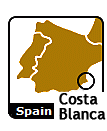

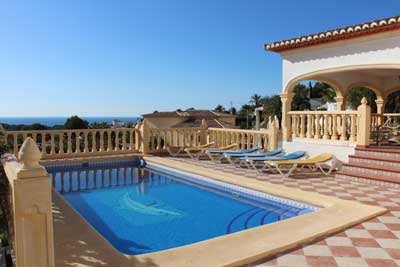
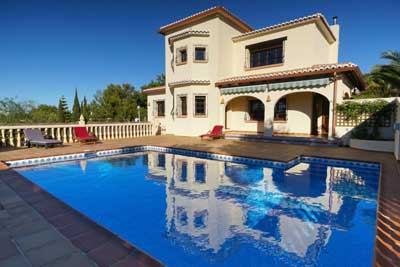
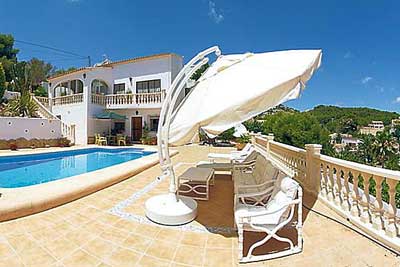
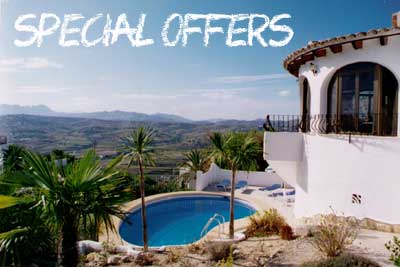
 5) Get closer to nature.
5) Get closer to nature.











